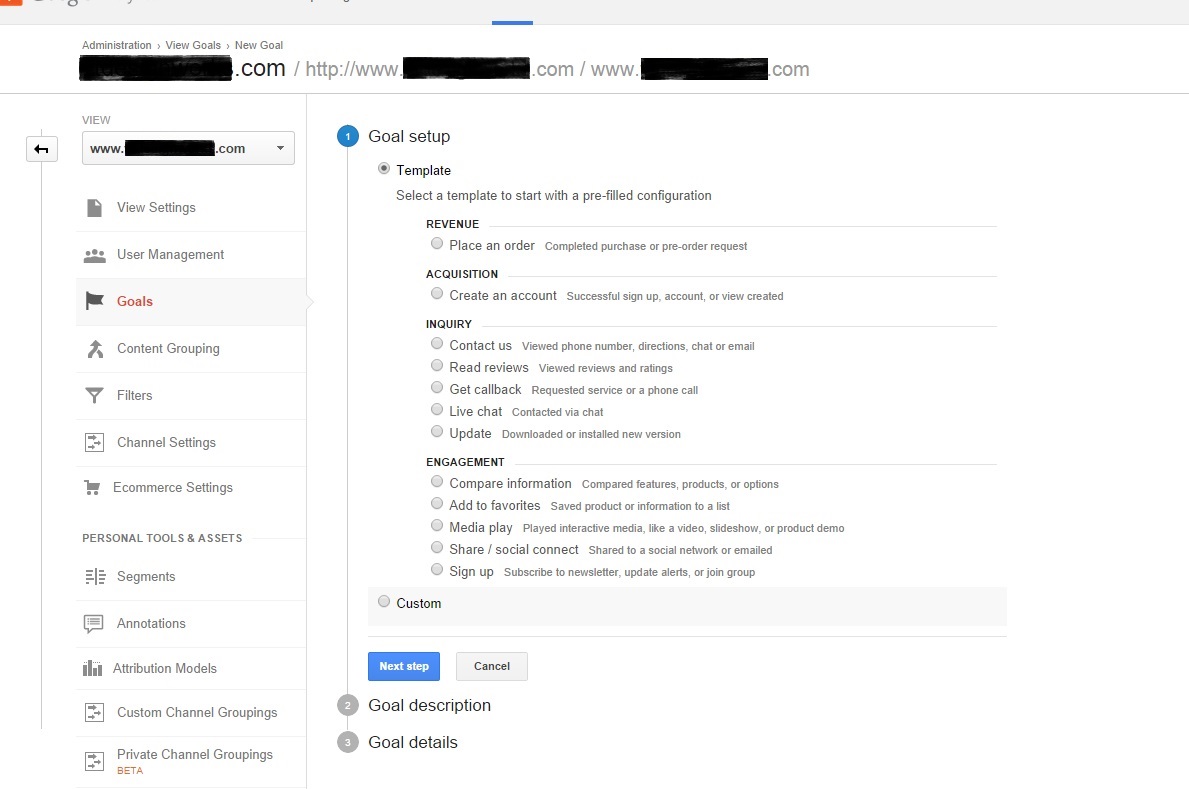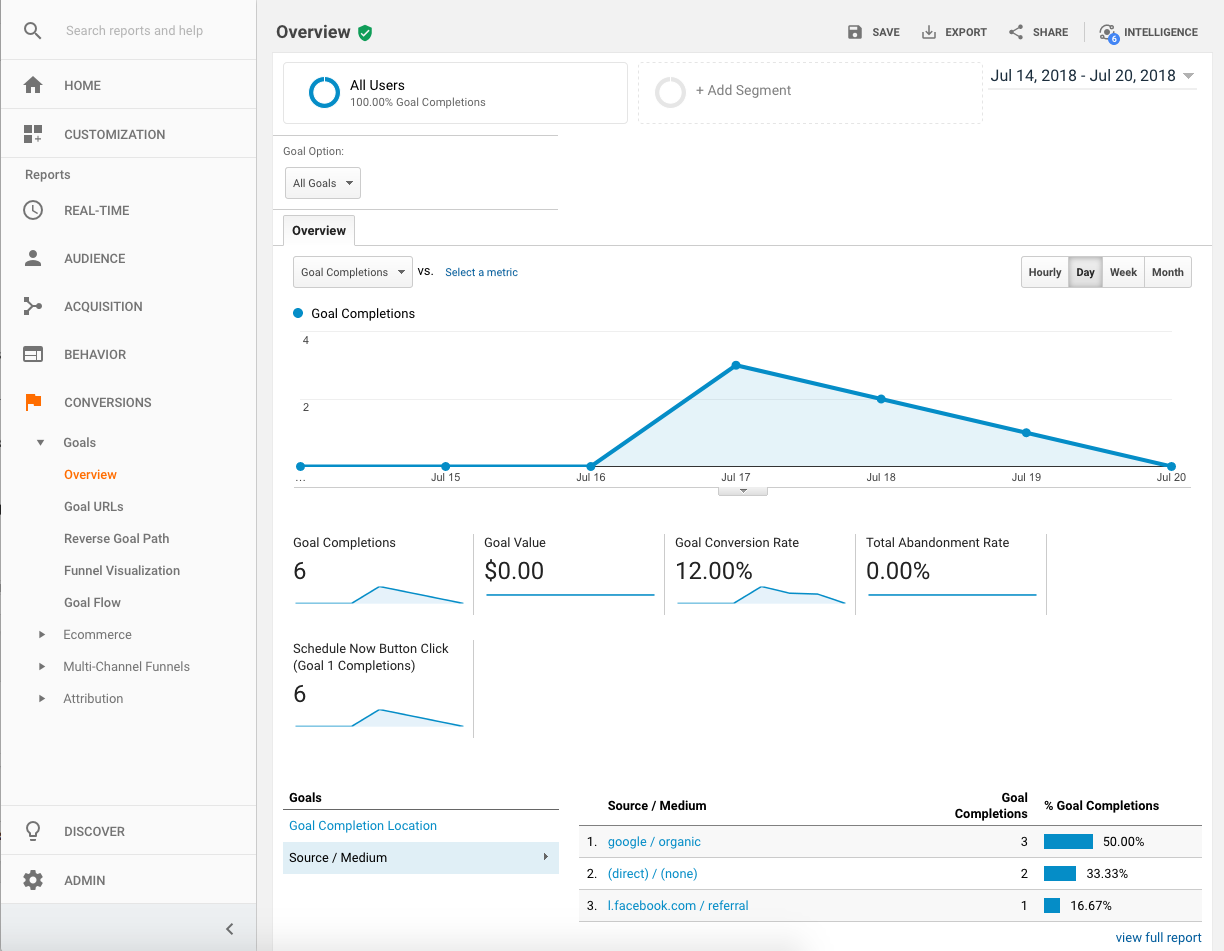Discover the Limitations of Google Analytics Goals: Unveiling the Information Kind That Remain Untrackable
As businesses significantly count on data-driven decision-making, recognizing the limitations of tools like Google Analytics ends up being paramount. While Google Analytics Goals offer beneficial insights right into customer communications, there exist information types that thwart monitoring, posturing difficulties to a thorough understanding of individual habits.
Incomplete Individual Journey Tracking
Incomplete customer trip tracking within Google Analytics can impede the capacity to precisely analyze individual behavior. When the customer journey is not completely tracked, there are spaces in the information that protect against a detailed understanding of just how individuals connect with a web site. This absence of insight can bring about missed opportunities for optimization and enhancements to the customer experience.
One usual issue with insufficient individual trip tracking is the lack of ability to see the complete path that individuals take previously completing a goal or leaving the website. Without this info, it is testing to determine where individuals might be coming across barriers or rubbing factors that stop them from converting. Furthermore, insufficient monitoring can cover the impact of specific advertising and marketing initiatives or web site modifications on individual behavior.
To resolve this constraint, it is important to set up proper monitoring devices within Google Analytics to capture the entire individual journey. This may involve establishing up event monitoring, objective funnels, or using tools like Google Tag Supervisor to ensure that no essential communications go unrecorded. By gaining a comprehensive sight of the user trip, web site proprietors can make even more informed decisions to improve customer involvement and drive conversions.
Attribution Difficulties
Navigating with acknowledgment obstacles in Google Analytics needs a thorough understanding of exactly how various touchpoints add to the total conversion procedure. Acknowledgment difficulties occur from the intricacy of modern consumer journeys, where customers communicate with numerous networks before transforming. Google Analytics gives numerous acknowledgment models like initial touch, last touch, and straight, each offering a different point of view on exactly how credit rating is appointed to touchpoints along the conversion path. These models may not constantly accurately reflect the real influence of each touchpoint on the conversion.
One usual acknowledgment obstacle is the trouble in connecting conversions to the appropriate source, especially in situations where customers connect with several channels prior to transforming. This can cause inaccuracies in identifying which advertising efforts are driving the most conversions. In addition, cross-device monitoring presents one more attribution challenge, as users frequently switch between gadgets during their journey, making it challenging to track their interactions seamlessly. Marketing experts have to meticulously assess and analyze acknowledgment data to make educated decisions and maximize their advertising approaches successfully.
Offline Conversions
Provided the challenges associated with connecting conversions accurately in online networks, the dimension of offline conversions provides a significant opportunity for marketing professionals looking for a much more extensive understanding of their consumers' journey. Offline conversions refer to activities that consumers take in the real world, such as making acquisitions in brick-and-mortar shops or over the phone, going to occasions, or involving with printed materials - what data is google analytics goals unable to track. These conversions are crucial for services that run both online and offline, as they offer useful insights into the performance of marketing projects across different touchpoints
Tracking offline conversions generally postured a significant challenge for marketing experts, as it was challenging to connect these actions back to certain on the internet communications properly. Nonetheless, with advancements in innovation, such as the integration of CRM systems, special identifiers, and promo code codes, businesses can now bridge the space between online and offline data to gain a more holistic view of customer behavior. By efficiently measuring Check This Out offline conversions, online marketers can enhance their methods, designate resources more successfully, and inevitably enhance the total client experience.
Cross-Device Monitoring
Cross-device tracking plays a crucial duty in understanding the interconnected nature of customers' digital communications across numerous devices. In today's omnichannel globe, where users flawlessly switch in between desktops, tablet computers, and smartphones, tracking their behavior throughout these devices is crucial for marketers to obtain a thorough sight of their client trip.

In addition, personal privacy worries and guidelines such as GDPR and CCPA have further difficult cross-device tracking. With users demanding even more control over their data and boosted restrictions on monitoring technologies, online marketers must locate privacy-compliant and cutting-edge means to attach individual communications throughout tools.
Dynamic Content Interaction
Comprehending individual interaction with dynamic content is pivotal in optimizing digital advertising and marketing approaches for improved audience communication. Dynamic web content describes web site aspects that alter based on customer habits, preferences, or other factors, supplying a tailored experience. Tracking individual interactions with vibrant material poses obstacles for standard analytics tools like Google Analytics.
While Google Analytics can track standard interactions like clicks and page views, it may struggle to record more nuanced engagements within dynamic content. what data is google analytics goals unable to track. Metrics such as time spent on specific dynamic aspects, float actions, or communications within pop-ups are often not conveniently measurable making use of typical tracking approaches. This restriction hinders marketers' capacity to fully grasp just how users are engaging with vibrant content and customize their methods as necessary

Final Thought
To conclude, Google Analytics objectives have limitations in tracking incomplete user journeys, associating conversions precisely, catching offline conversions, tracking cross-device communications, and gauging vibrant web content involvement. These constraints highlight the significance of checking out extra monitoring approaches and devices to gain a much more comprehensive understanding of individual actions and conversions beyond what Google Analytics can supply.
While Google Analytics Goals offer important insights right into customer communications, there exist data types that elude tracking, posturing difficulties to a detailed understanding of customer actions.Insufficient individual journey tracking within Google Analytics can link prevent the capacity to precisely evaluate user actions. When the customer journey is not fully tracked, there are voids in the information that stop a detailed understanding of exactly how users interact with a website.One usual concern with incomplete user trip monitoring is the inability to see the complete path that users take in the past completing a goal or leaving the website. By acquiring an extensive view of the customer journey, website proprietors can make even more informed choices to enhance customer interaction and drive conversions.